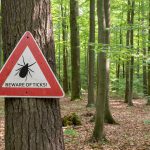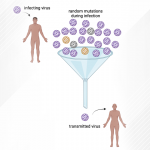Pennsylvania has the highest number of confirmed cases of Lyme disease in the United States, according to the most recent data from the Centers for Disease Control. In 2016, the latest year for which comprehensive data is available, Pennsylvania reported 8,988 confirmed cases of Lyme disease out of the 26,203 confirmed cases reported nationwide.
Lyme disease is caused by the bacterium Borrelia burgdorferi, and it is most commonly transmitted by the blacklegged tick, also known as a deer tick. If caught early, Lyme can be successfully treated with antibiotics.
Ticks attached for less than 24 hours generally have little to no risk for Lyme transmission. With that in mind, here are a few tips to stay safe outdoors and minimize exposure:
Use DEET insect repellents.
Treat clothing, hiking gear and camping equipment with Permethrin.
Hike in the center of trails and avoid hiking through tall grass.
Wash clothes in hot water after coming indoors.
Take a shower within two hours of getting home.
Check yourself and others for ticks, paying attention to areas behind the ears, under the arms, behind the knees, and around the navel and groin.
Unfortunately, many cases go misdiagnosed for months or even years. The disease’s often vague symptoms, such as headache, fatigue, fever, muscle aches and joint pain, can be difficult to pinpoint for clinicians. Complicating the diagnosis further, the disease can mimic the symptoms of ALS and MS. While the “bull’s-eye” rash is commonly linked to Lyme, it is present or apparent only in a small percentage of cases.
If you find a tick, remove it immediately:
Use tweezers to grasp the tick as close to the skin as possible.
Pull the tweezers directly upward using steady pressure without twisting or jerking.
Cleanse the area after removal.
Don’t use nail polish, petroleum jelly, heat or other folk remedies.
If questions or concerns arise, don’t hesitate to contact a medical professional about possible Lyme disease transmission.
***
ABOUT THE AUTHOR: A graduate of the SHRS Emergency Medicine Program, Alex Cutsumbis has experience as a field paramedic and EMS supervisor, and he is currently responsible for all EMT programs at the University of Pittsburgh and the Center for Emergency Medicine. He enjoys the patient care aspects of EMS and is interested in the growth and development of EMS in the United States.








